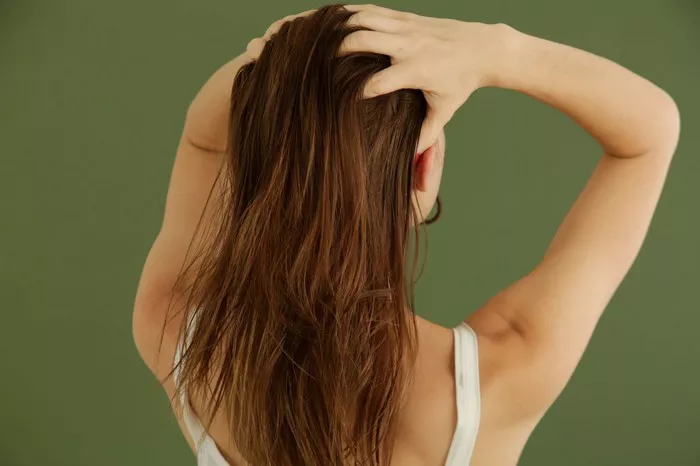Keeping your hair moisturized is key to making it soft, shiny, and healthy. Dry hair can look dull, feel rough, and break easily. But with so many products and methods out there, it’s hard to know what works. This article will break down simple, effective ways to moisturize your hair, whether you use natural ingredients, store-bought products, or lifestyle changes. Let’s dive in!
Why Does Hair Need Moisture?
Hair is made of a protein called keratin. When it loses moisture, the outer layer (cuticle) becomes rough, leading to frizz, split ends, and breakage. Moisture helps:
- Strengthen hair to prevent damage.
- Add shine by smoothing the cuticle.
- Improve elasticity so hair stretches instead of snapping.
- Protect against heat and pollution.
Dry hair often comes from:
- Overwashing.
- Heat styling (flat irons, blow dryers).
- Harsh weather (sun, wind, cold).
- Chemical treatments (dye, relaxers).
Know Your Hair Type
Your hair type determines what products or methods work best.
Here’s a quick guide:
- Straight hair: Gets oily faster but may have dry ends.
- Wavy hair: Needs light moisture to avoid frizz.
- Curly/coily hair: Naturally drier; needs heavy creams or oils.
- Damaged hair: Requires deep conditioning and protein treatments.
- Fine hair: Can be weighed down by thick products.
Natural Oils for Moisture
Natural oils are affordable and free of chemicals. They penetrate the hair shaft or coat the surface to lock in moisture.
Coconut Oil
- Best for: All hair types (especially thick, curly, or damaged hair).
- How it works: Penetrates deeply to prevent protein loss.
- How to use: Warm 1–2 tablespoons, apply from mid-length to ends, leave for 30+ minutes, then wash.
Olive Oil
- Best for: Dry, frizzy, or color-treated hair.
- How it works: Contains antioxidants to repair damage.
- How to use: Mix with honey for a mask, leave for 20 minutes, rinse.
Argan Oil
- Best for: Fine or oily hair.
- How it works: Lightweight, adds shine without greasiness.
- How to use: Apply 2–3 drops to damp hair as a leave-in.
Jojoba Oil
- Best for: Scalp health and balanced moisture.
- How it works: Mimics natural scalp oils.
- How to use: Massage into the scalp weekly.
Castor Oil
- Best for: Thick, coarse, or slow-growing hair.
- How it works: Thickens hair and seals moisture.
- How to use: Mix with lighter oils (e.g., coconut) to avoid stickiness.
Store-Bought Moisturizing Products
If you prefer ready-made solutions, try these:
Leave-In Conditioners
- What they do: Provide lightweight moisture all day.
- Look for: Ingredients like glycerin, aloe vera, or shea butter.
- How to use: Spray or apply to damp hair after washing.
Deep Conditioners
- What they do: Repair and hydrate intensely.
- Look for: Proteins (keratin) for damaged hair, or oils (avocado) for dryness.
- How to use: Apply weekly, leave for 15–30 minutes under a shower cap.
Hair Masks
- What they do: Boost moisture for 1–2 weeks.
- Look for: Natural butters (shea, cocoa) or honey.
- How to use: Use monthly or after chemical treatments.
Moisturizing Shampoos & Conditioners
- What they do: Cleanse without stripping natural oils.
- Look for: Sulfate-free formulas with coconut oil or shea butter.
- Avoid: Products with alcohol or silicones.
Hair Serums
- What they do: Smooth frizz and add shine.
- Look for: Dimethicone (for temporary smoothing) or natural oils.
DIY Moisturizing Treatments
Homemade masks are cheap and customizable. Always patch-test first!
Avocado + Banana Mask
- Good for: Extremely dry or curly hair.
- Recipe: Mash 1 ripe avocado + 1 banana + 2 tbsp yogurt. Apply for 20 minutes.
Honey + Aloe Vera Gel
- Good for: Sun-damaged or itchy scalp.
- Recipe: Mix 2 tbsp honey + 3 tbsp aloe vera gel. Leave for 15 minutes.
Apple Cider Vinegar Rinse
- Good for: Buildup removal and shine.
- Recipe: Mix 1 part vinegar + 3 parts water. Rinse after shampooing.
Techniques to Lock in Moisture
How you apply products matters!
The “LOC” Method
- Liquid: Spray water or leave-in conditioner.
- Oil: Seal with jojoba or argan oil.
- Cream: Apply a butter (shea) to lock everything in.
Pre-Shampoo (“Pre-Poo”) Treatment
- Steps: Apply oil to dry hair 1 hour before washing. Prevents shampoo from drying hair out.
Protective Styles
- Examples: Braids, buns, or silk wraps. Reduces exposure to damage.
Avoid Overwashing
- Tip: Wash hair 1–3 times weekly. Use dry shampoo between washes.
Ingredients to Avoid
Some products make dryness worse:
- Sulfates: Harsh cleansers (e.g., sodium lauryl sulfate).
- Alcohol: Drying (e.g., ethanol, isopropyl alcohol).
- Silicones: Coat hair but cause buildup (e.g., dimethicone).
Lifestyle Changes for Hydrated Hair
- Drink water: Hydration starts from the inside.
- Eat healthy fats: Avocados, nuts, and fish support hair health.
- Sleep on silk: Reduces friction and moisture loss.
Common Mistakes
- Using too much heat: Always apply a heat protectant.
- Skipping trims: Split ends make hair look drier.
- Overloading with protein: Balance protein treatments with moisture.
Conclusion
- Test products: What works for others may not suit you.
- Be consistent: Moisturize weekly for long-term results.
- Protect hair outdoors: Wear hats or use UV-protectant sprays.
Moisturizing your hair doesn’t need to be complicated. Whether you choose oils, store-bought products, DIY masks, or better habits, the key is to listen to your hair’s needs. Start with one method, track progress, and adjust as needed. With patience, you’ll see softer, stronger, and healthier hair!
Related topics:
What Can I Do to Moisturize My Hair?
What Can I Put in My Hair to Moisturize It
What Can I Put on My Hair to Moisturize It?


